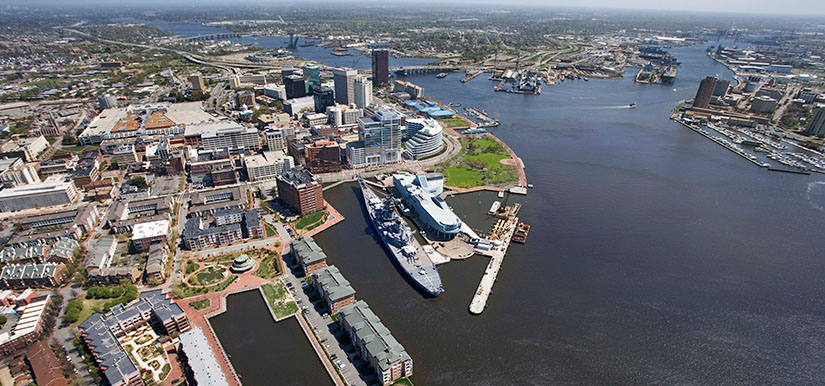NREL Buildings Research Is Helping US Navy Make Energy Efficiency Improvements

With more than 500,000 buildings and structures at more than 500 domestic and international naval sites, the U.S. Navy has an opportunity to achieve significant energy and cost savings by increasing efficiency. To get there, high-quality and consistent data is essential.
Research recently completed by the National Renewable Energy Laboratory (NREL) could provide the complex data analysis capabilities necessary to help the U.S. Navy's building stock meet federal decarbonization and energy efficiency standards. The NREL project was selected through an annual solicitation from the U.S. Department of Defense's (DOD's) Environmental Security Technology Certification Program (ESTCP), an environmental, resilience, and installation energy and water technology demonstration and validation program that has existed for nearly 30 years.
Co-led by Bill Livingood, a partnership development manager at NREL, and Lauren Adams, a data science researcher in NREL's Building Technologies and Science Center, this research focuses on creating a consistent data taxonomy in which asset and meter data can be combined to provide actionable insights to facility managers and other personnel.
"It turns energy data into actionable insights," Adams said. "For example, if you have higher emissions from a smaller building, you should investigate why. It helps you better identify an issue."
This impactful ESTCP project integrates NREL's Standard Energy Efficiency Data Platform (SEED Platform™) with the Navy's Smart Grid program.
SEED is an open-source software application designed to manage building performance data, which can be costly and time-consuming for states, local governments, and other organizations. The platform helps users combine data from multiple sources, clean and validate it, and generate reports. By leveraging NREL's unique capabilities in the Energy Systems Integration Facility (ESIF), researchers created a replica of the Navy Smart Grid and the buildings connected to it. Combining SEED and the Navy Smart Grid system resulted in data that was more consistent and easier to analyze.
Thorough and clear data analysis helps facility managers understand energy efficiency issues and learn how to fix them. For example, anomalies in emissions data could identify where corrections could be made. Or, managers could identify and examine data from groups of buildings to suggest a batch of performance upgrades. Facility managers could also prioritize needed upgrades, such as electrification retrofits; heating, ventilating, and air conditioning (HVAC) replacements; or other projects and decide what needs are most pressing systemwide.
"It bridges the gap between the metered data and the asset data for greater accuracy," Adams said. "You can compare buildings year after year to help with benchmarking and baselining, and it highlights the worst areas of performance. We're providing tools and analysis to help facility managers make these critical decisions."
Impact Beyond Navy Buildings
NREL's research efforts provided several enhancements to the Navy Smart Grid, including improved building controls interoperability, asset-driven key performance indicators, a comprehensive library of automated fault detection and diagnostics (AFDD) algorithms, and a process for generating digital twins of buildings and facilities.
The methods used in the project can also potentially be applied elsewhere to develop similar analysis methods and cost and energy savings opportunities. In addition to the work with the Navy, Adams is also leading a project with the U.S. Army that focuses on enhancing the extraction of existing asset management data and combining it with measured data for higher-impact analytics.
"If you can create a consistent data taxonomy, that analysis can be used generally across a lot of buildings or sites for the Department of Defense," Adams said.
NREL's ESTCP
This work represents one of nine ESTCP projects currently underway at NREL. The program selects research proposals to identify and demonstrate innovative technologies and solutions to address high-priority DOD needs. Proposals are solicited annually and typically include formal demonstrations at DOD facilities, technical reviews, and other processes to ensure that the information and findings from the projects and technologies are available to all stakeholders.
"NREL's mix of world-class facilities, its ability to blend theoretical research with practical deployment and demonstration, and our willingness to innovate and try new things make it a perfect partner for ESTCP," Livingood said. "Our long history with the program and track record of high-impact projects that regularly result are a testament to that strong partnership."
Learn more about NREL's buildings research and opportunities to partner.
Last Updated May 28, 2025
